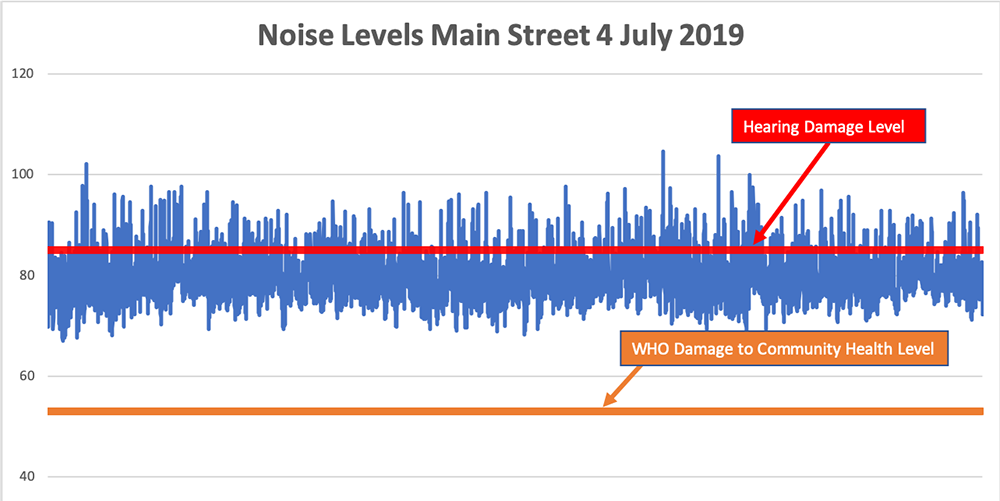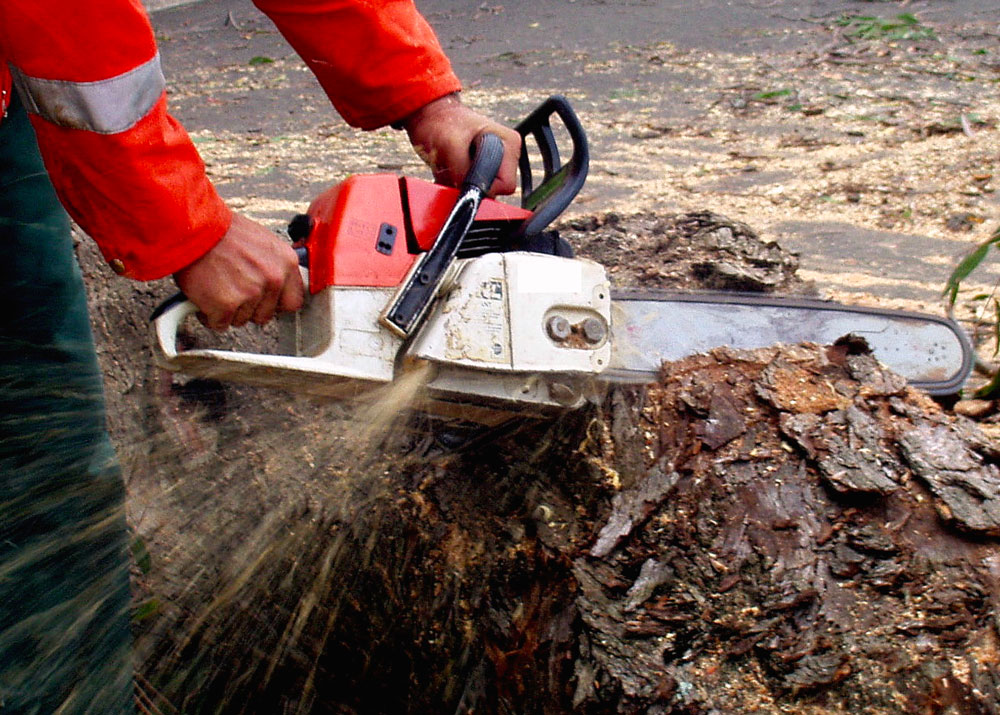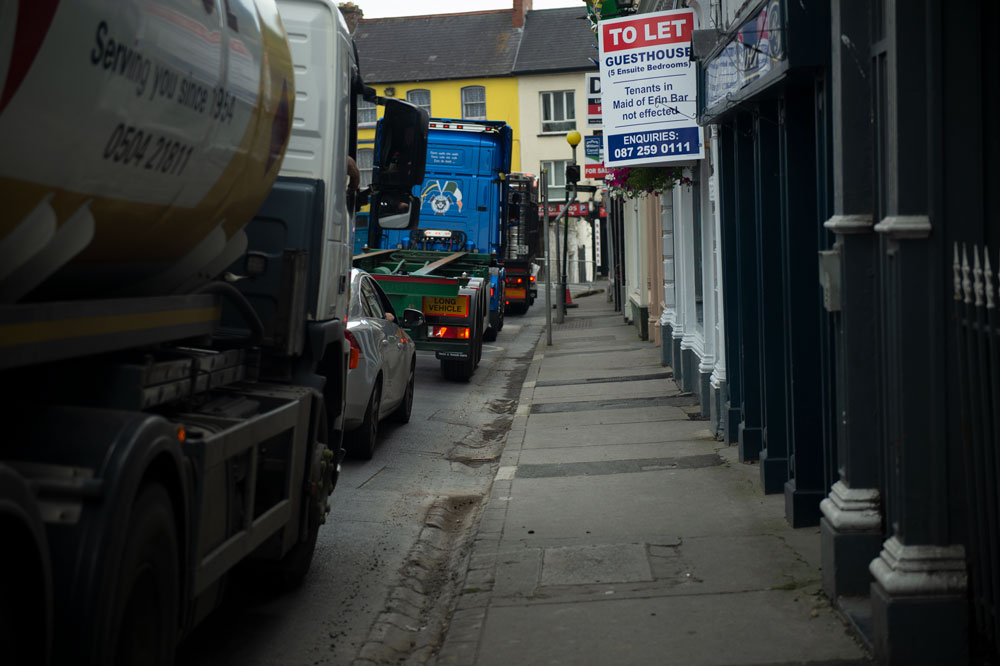
Monitoring took place at 7 different locations, 5 along the normal N24 route through the town and two along N24 diversion routes due to the current Davitt St and Church St roadworks.
Noise Levels
The World Health Organisation provides guidelines for maximum levels of average traffic noise. The WHO says that average noise levels above 53 decibels (dB) are associated with adverse health effects[1]. It goes on to recommend reducing noise both at the source and on the route between the source and the affected population by changes in infrastructure.
Road traffic noise has previously been associated with sleep problems and increased blood pressure, but a study in the UK has shown a link with deaths and strokes[2].
Noise levels equivalent to a working chainsaw were measured

- 105.4 decibels were recorded on Main Street - the level of noise from a working chainsaw
In Tipperary town the following average noise levels were measured: 70.73 dB (Main Street 29 June), 78.54 (Main Street 4 July), 68.92 (Davitt Street), 72.88 (Bank Place), 69.87 (O’Brien Street with N24 Diversion), 75.2 (Crosses Corner). These levels are up to 67% above the World Health Organisation guidelines.
The WHO, in its 2018 study, found stronger evidence of cardiovascular and metabolic effects of environmental noise[3]. The main effects include secretion of stress hormones and blood pressure elevations. The study showed that 10 minute exposure to road traffic noise at 89 dB temporarily increased blood pressure among both men and women.
Noise levels measured in Tipperary Town regularly exceeded 89 dB, with a maximum being measured of 105.4 dB. This noise level is equivalent to the noise of a chainsaw. Noise levels above 85 dB are accepted as causing damage to human hearing. On one day alone, this level was exceeded 121 times.

Noise levels were measured every second over several hours on each day of monitoring. Over four whole days of measurement, the minimum level never went below the World Health Organisations maximum guideline, not for a single second. On that day, the noise levels were at the levels of “harmful to community health” 100% of the time. On another day, over a period of nine hours, the levels only fell below the WHO guideline for 3 seconds.
Conclusion: Noise levels from traffic along the N24 route through Tipperary Town are far in excess of the World Health Organisation’s guidelines and must be considered to be contributing to adverse health effects among the affected community.
Sources
[1] http://www.euro.who.int/__data/assets/pdf_file/0009/383922/noise-guidelines-exec-sum-eng.pdf, page 5,
[2] https://www.independent.co.uk/life-style/health-and-families/health-news/traffic-noise-could-make-your-life-shorter-and-increase-your-risk-of-stroke-10342121.html
[3] http://www.euro.who.int/en/health-topics/environment-and-health/noise/publications/2018/biological-mechanisms-related-to-cardiovascular-and-metabolic-effects-by-environmental-noise


